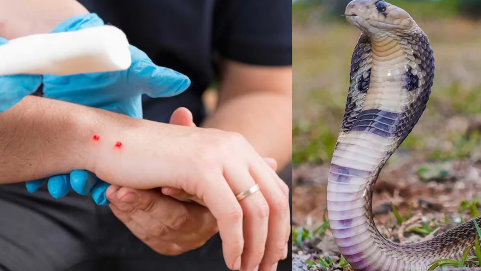

Bhubaneswar: Odisha is witnessing a deadly surge in snakebites, with 1,859 deaths reported over the 2023–24 and 2024–25 fiscal years—1,150 fatalities in 2023–24 and another 709 in 2024–25 . The coastal and tribal regions bear the burden most intensely, with districts like Cuttack (162 deaths), Ganjam (155), and Balasore (139) reporting some of the highest tolls.
Recent monsoon data shows fatalities from snakebites surged dramatically—from 305 deaths in 2016 to over 1,000 in 2023—now exceeding disaster-related casualties like lightning and flooding.
Delayed Treatment: Victims often first seek traditional healers—using methods like brass plates or pepper tests—before reaching medical help. This delay often proves fatal.
Infrastructure Gaps: Anti‑venom stocks, though available, aren't always within “golden hour” reach. Many Primary and Community Health Centres lack trained staff to administer ASV promptly, leading to life-threatening delays.
Public Awareness Deficit: Myths persist, and awareness campaigns are limited—especially in rural areas where agriculture and forests heighten exposure.
Odisha’s State Action Plan
Launched by ICMR-RMRC Bhubaneswar, the plan focuses on community engagement, capacity-building and data-driven interventions.
National Action Plan (NAP‑SE)
Led by NCDC and WHO alignment, includes surveillance via IHIP, training of rural health workers, antivenom cold‑chain maintenance, and public awareness drives.
Tech Interventions
The Sarpa app helps victims quickly locate nearest medical centres and alert snake rescuers. Odisha plans a similar SERP app with GIS, complementing the national initiative.
Community Outreach & School Programmes
NGOs such as Rangers are educating 1,000+ schools on snake safety and first aid.
Strengthening the Health System
Ensure ASV availability in all PHCs/CHCs and stocktracking under NHM .
Train ASHAs, ANMs, and PHC doctors to administer anti‑venom and provide critical care.
Prompt ambulance services (108 model) to ensure “golden hour” transfer.
Challenges persist—traditional practices, rugged terrain, and health system gaps. But with integrated action—combining tech, training, treatment and community buy-in—the tide can be turned. As WHO targets a 50% reduction in snakebite deaths by 2030, Odisha’s multi-sector strategy offers a promising template